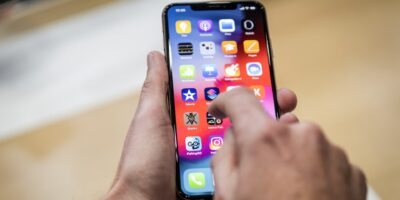Apple supports its own messaging service, known as iMessage, on its iPhone and iPad lines of products. With iMessage, users can send text, image, and video messages to other Apple users over a network connection. This means that the data is not sent through the Short Message Service (SMS) protocol, like a traditional text message, and will not incur additional fees from a cellular carrier. If iMessage is not activated on your iPhone or iPad, you will find that all outgoing messages from your device are sent in a green color. Once iMessage is enabled, messages to other Apple users will appear in blue.
Step 1: Press the home button at the bottom of your iPhone or iPad.
Step 2: Tap on the “Settings” application, which is designated by the gear icon on the homescreen.
Step 3: Select “Messages” from the list of setting menus.
Step 4: Move the slider back next to “iMessage” into the green “On” position. This will now activate iMessage on your device. Be sure you have a clear cellular signal so that your phone number can be linked to your iMessage account.
Step 5: Turn the “Send as SMS” option to the green “On” position if you want text messages to be resent as SMS messages if a recipient is unavailable on iMessage.
Step 6: Tap on the “Send & Receive” row to view all phone numbers and email addresses associated with your iMessage account.
Step 7: Tap on each phone number and email address that you want to keep enabled for iMessage. When you tap on the row, the item will become checked and other Apple users will be able to send messages to that number or address.
Step 8: Go back to your device’s main homescreen and tap on the “Messages” app icon. Now when you begin a new conversation with another person who has an iPhone or iPad, your messages will now be exchanged over iMessage and display in blue boxes.
More information on the differences between traditional SMS messages and the iMessage system can be found on the Apple support website.


